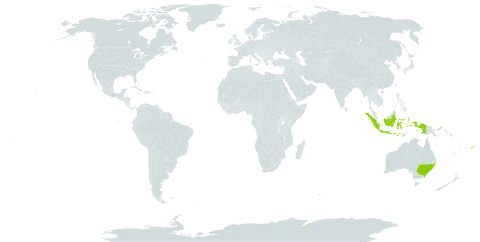Small trees, shrubs or lianas, up to 20 m or more, young parts tomentose or glabrous. Leaves opposite, petiolate, exstipulate, ovate to ovate-lanceolate (obovate, extra-Mal.), base cuneate, apex acute to long acuminate, entire or ser-rate, with translucent dots, nerves connected near the margin. Inflorescence axillary or terminal, cymose, pleiochasial (racemose) or paniculate. Flowers unisexual or bisexual; receptacle continuous with the pedicel, slightly convex, glabrous; tepals caducous before or at anthesis, spirally arranged (outermost sometimes decussate), imbricate, 10-38, the lower ovate to ± orbicular or reniform, up to 3 mm long, base swollen and sometimes peltate, apex rounded or obtuse, grading upwards into longer, narrower and more membranous tepals, the uppermost spathulate, up to 5 mm long. Stamens 7-25, spirally arranged, filament shorter or as long as the anther, connective produced at apex, anthers tetrasporangiate, extrorse or latrorse, opening by two longitudinal slits. Carpel solitary (rarely 2), rudimentary or absent in male flowers, superior, barrel-shaped, glabrous or sparsely strigose; stigma sessile tufted-papillose, 1-celled; ovule 1, pendulous, anatropous. Fruit a small spherical, succulent berry. Seed hard, smooth or ridged; embryo small, apical; endosperm abundant.
More
See family description: Trimeniaceae.
